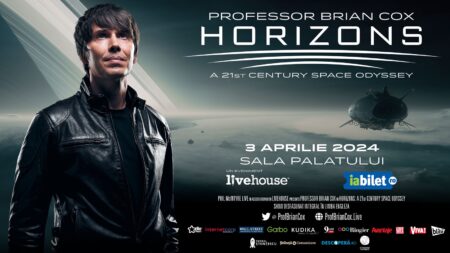English-language communication and collaborations between local and international journalists would be key to improving the visibility of research from countries with more modest results, believes Deborah BlumPulitzer Prize-winning science journalist and director of the Knight Science Journalism Programme at MIT. I asked her in an online conference how less developed countries in the field of research could gain visibility for their scientific results when most of the very important results come from developed countries.
I had the opportunity to ask her a question at an online event at Science Journalism Forum, held at the end of August. There were three days of workshops and panels on science journalism and science communication, attended by science journalists, researchers and academics.
My question referred to the situation in Romania, but I formulated it more generally.
Here is the full answer:
"I'm even on the board of a non-profit organization in Brazil that deals with this issue. They are trying to make science more visible among Brazilian citizens [and are] wondering how to do that. So that would be two different questions. How to make science more visible in my own country and how to make science more visible internationally. As for the second question, it will probably have to do with the fact that English is now the universal language of communication. The sooner we find a solution for translation so that we can partner stories from different countries and present them in parallel in English (in a way that is not clear to me now either), the more we can raise their profile on the international stage.
I also think we need partnerships between science journalists from countries with a tradition of science journalism and countries with less tradition, partly because it facilitates what I was describing before - science journalism in two languages - and partly because I'm not a huge fan of "parachuting" someone into another country for a few days, then leaving as if they've said what they had to say and that's it. So partnerships like this could help the story move forward."
I really liked the response because it emphasized collaboration, partnership and learning and rejected journalism done superficially, from a quick trip and a few statements. Without science communication in English we have little chance of being visible internationally, and communication in English would be built on the shoulders of answering the first question Deborah Blum mentioned: how do I make science visible first among my own citizens?
And while she didn't answer this question for me personally, she touched on it during his talk, which was titled "Five Ways to Build and Improve Tomorrow's Science Journalism". In talking about the audiences of various types of science publications, he made a distinction between what I usually call "specialist audiences" and "general audiences". But she did it with a very interesting metaphor, of the bonfire science. On the one hand there are those who are already "convinced", who are already around the fire, and on the other hand there are those who have moved away or never got there.
"From my point of view," said Deborah Blum, "this last public means the most to me. Not the people who are already around what I call the science campfirebut disgruntled people who left there, who started to think in school they were not smart enough, or who were told they were stupid by people who knew science. Those people decided that science wasn't necessary for their daily lives, when in fact the truth is the opposite."
As long as science does not address those people, it will not be visible enough. And how do we talk to them? "We tell them stories in a way that makes the science accessible, that makes them feel smart, and we never talk down to them."
Deborah Blum is a Pulitzer Prize-winning science journalist and author of science books best-seller. She has written for the New York Times, Washington Post, Wall Street Journal, Time, Scientific American, Discover and Wired. She is one of founders of Undark magazine and director of Knight Science Journalism Program from the Massachusetts Institute of Technology - MIT, the most prestigious program for science journalists.
Image source: screenshot from the conference





